The house was built between 1878 and 1880 and designed by Vilmos Freund and Zsigmond Quittner (not his son, Ervin Quittner, who was not alive at the time. Even compared to the other palaces of Andrássy Avenue, it stands in an exquisite location: only a few steps away from Oktogon, on the corner of the pleasant Liszt Ferenc Square. The house was built for Ignác Karpelesz (later Karsai), the director of the Pest Viktória Steam Mill (his family also built the house on the other corner of the square, in which Írók boltja operates). However, through the last decade, the stunning Renaissance revival palace has mostly been tied to unreasonably quickly changing ownership and missing millions. It seems, this sad series of events finally came to an end in 2020.
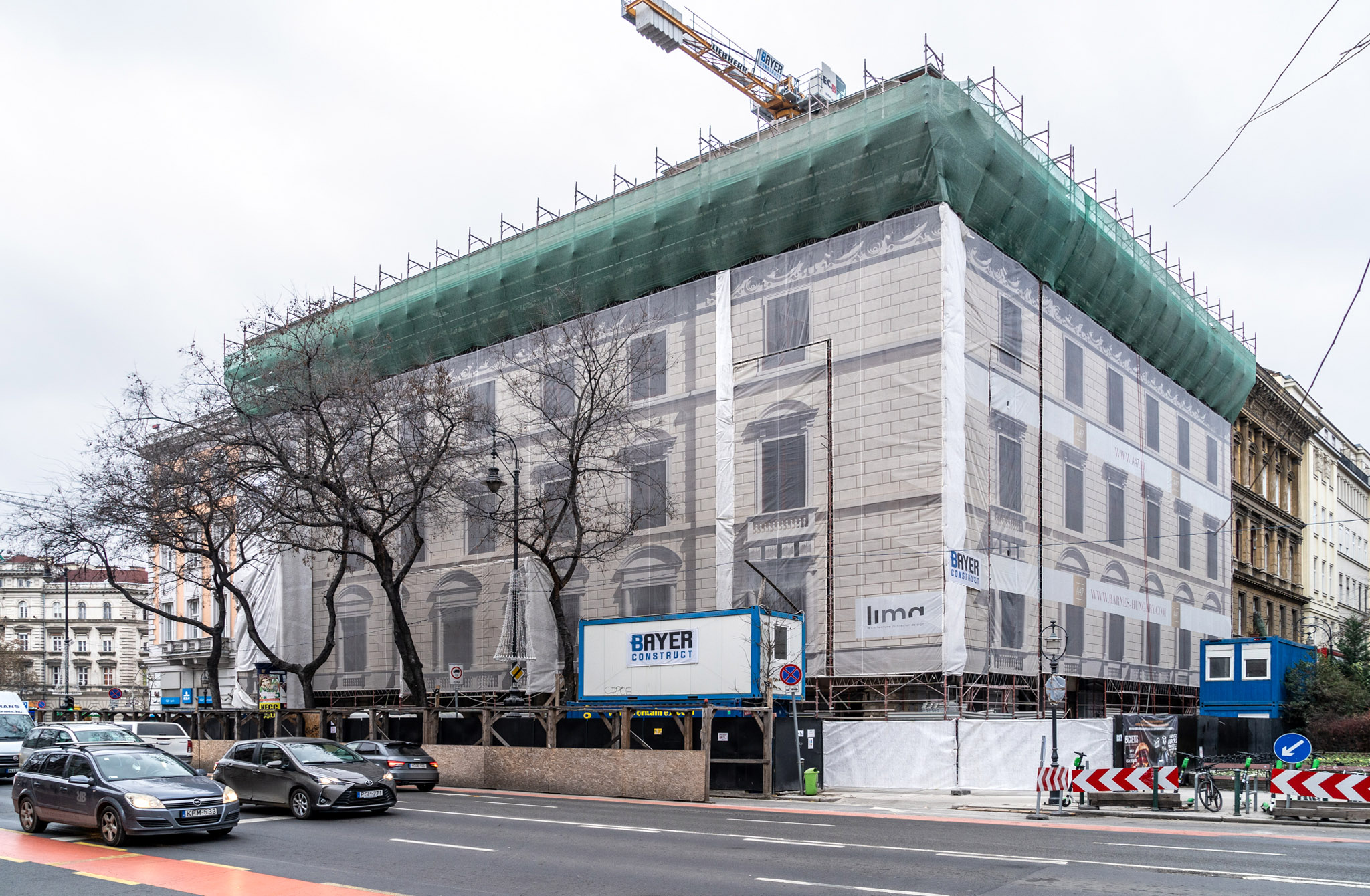
The print on the safety net on the buildings showcases the plans for the restored facade (Photo: Balázs Both/Pestbuda.hu)
According to plans completed by Lima Design, the renovation of the house finally began in February 2020 in an investment funded by the real estate developer BBID. The three-storey building with a usable floor area of 4700 square metres is undergoing a complete renovation. The developers have promised to retain and restore the protected historically listed elements of the building, including its ornate entrance, the main staircase and bannisters.
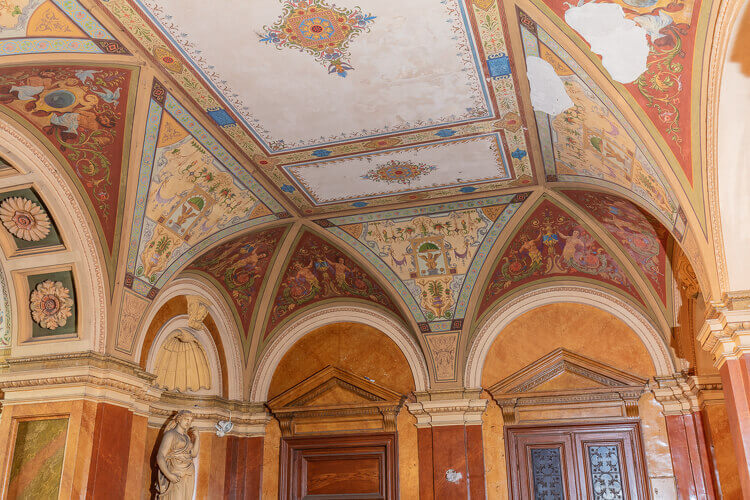
The ornate lobby is one of the most valuable parts of the building, and is also being restored (Photo: Bayer Construct Zrt.)
The house's facade, which has turned black due to air pollution, will be repainted a light grey, and 10 luxury flats will be created within. The penthouse, including a roof terrace, will be the most luxurious.
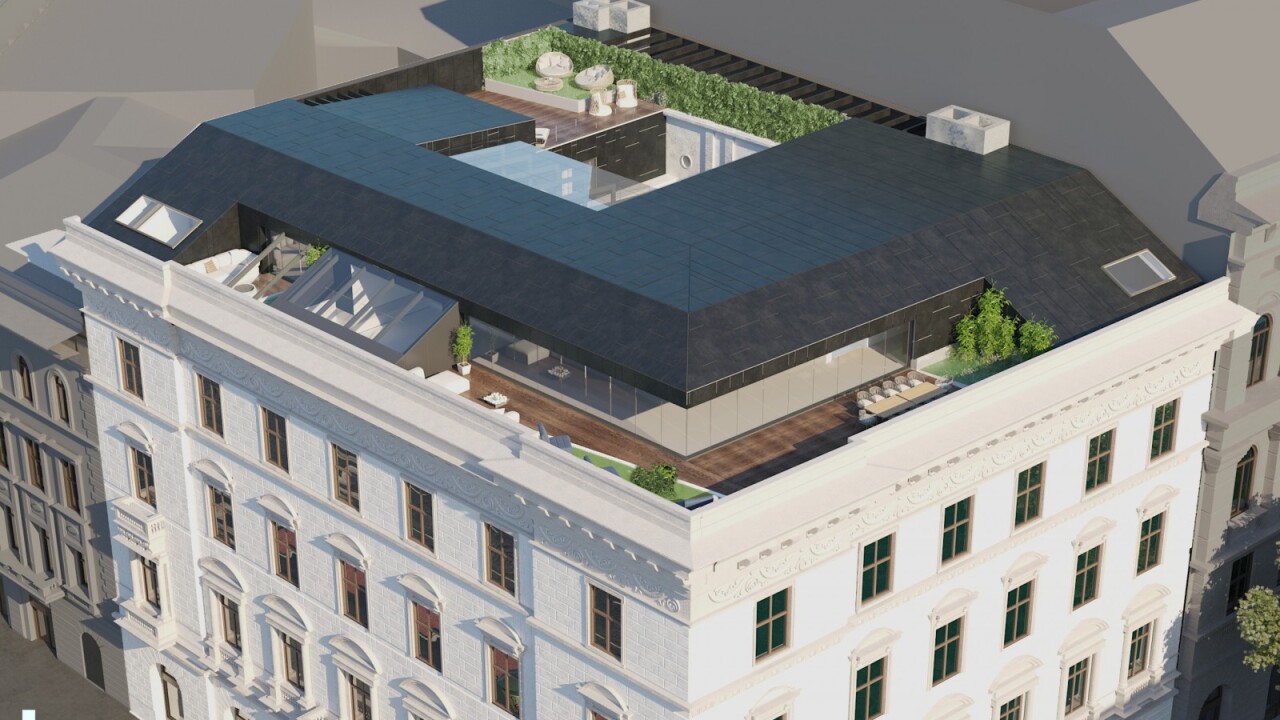 The roof terrace on top of the building will barely be visible from below (Visual: Lima Design)
The roof terrace on top of the building will barely be visible from below (Visual: Lima Design)
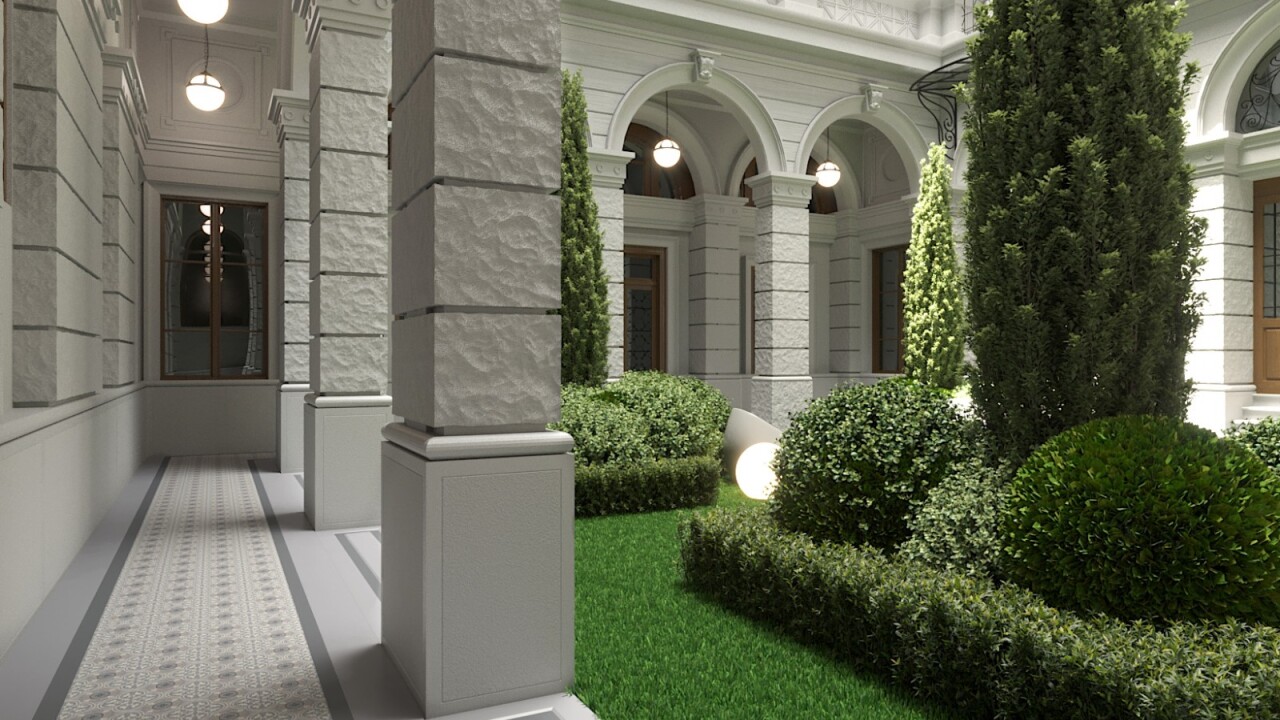
It seems the inner courtyard will not be roofed over in this case, a rarity today (Visual: Lima Design)
Luxurious apartments and upper-class residents are not alien to the building, as several famous and wealthy families have lived within the palace's walls — beyond, of course, the Ignác Karsai and his family. Among others, Vilmos Zsolnay, without whom Lechner's Art Nouveau architecture would have had a completely different character, and his son Miklós, who operated the Budapest branch of the factory based in Pécs. The former Minister of Defence, Baron Sándor Szurmay was another famous resident in his retirement. As was Gyula Kőnig, the respected mathematician after whom Kőnis theorem is named, and Rezső Palotay, the owner of the Lukács Baths.
The palace also housed the editorial offices of several periodicals, for example, Magyar Hírlap and Világ. A wide range of institutions, companies and other organizations have operated in its halls: a glove shop, pharmacy, a sheet music rental service, and the local representative of the German Borgward car manufacturer.
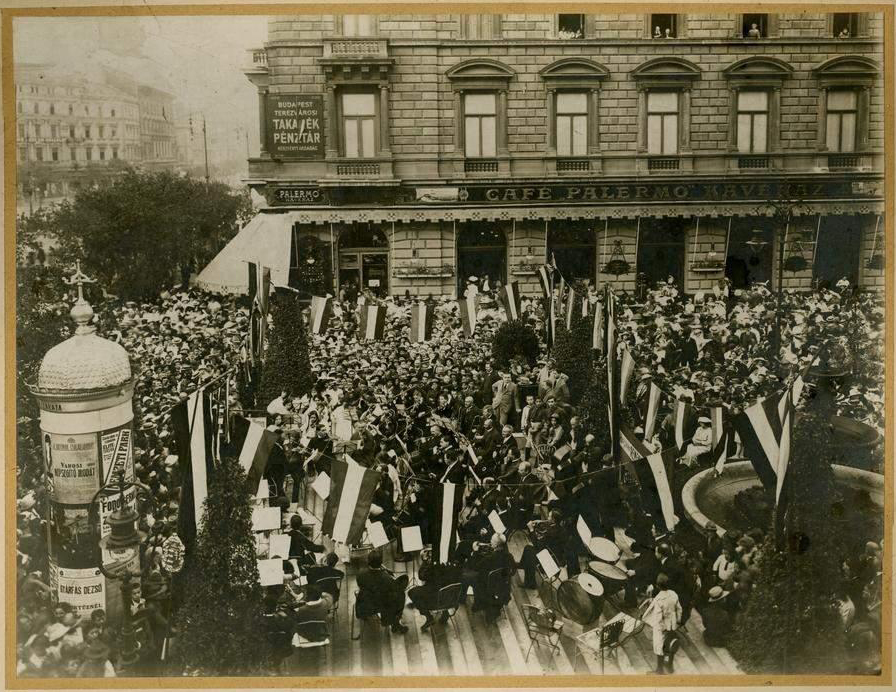
The war-charity concert of the Auguszta Orchestra on Liszt Ferenc Square on 27 August 1914, in front of the terrace of the Palermo Café, photo by Mór Erdélyi. Oktogon visible in the background (Photo: FSZEK Budapest Collection)
However, most importantly, the building housed the Palermo Café, which occupied the ground floor towards Andrássy Avenue and Liszt Ferenc Square, and the Terézváros Civic Casino on the first floor.
The café (which operated opposite the Japán Café) was a popular locale among celebrities such as Ferenc Molnár, Sándor Bródy and Endre Ady, but Count Károly Khuen-Héderváry also visited often. According to contemporary reports, Ady preferred to spend his time in the box named after the writer and journalist Ede Kabos. He was so deeply associated with the box that a memorial plaque designed by Dezső Boktros Biermann was placed within it on the tenth anniversary of his death.
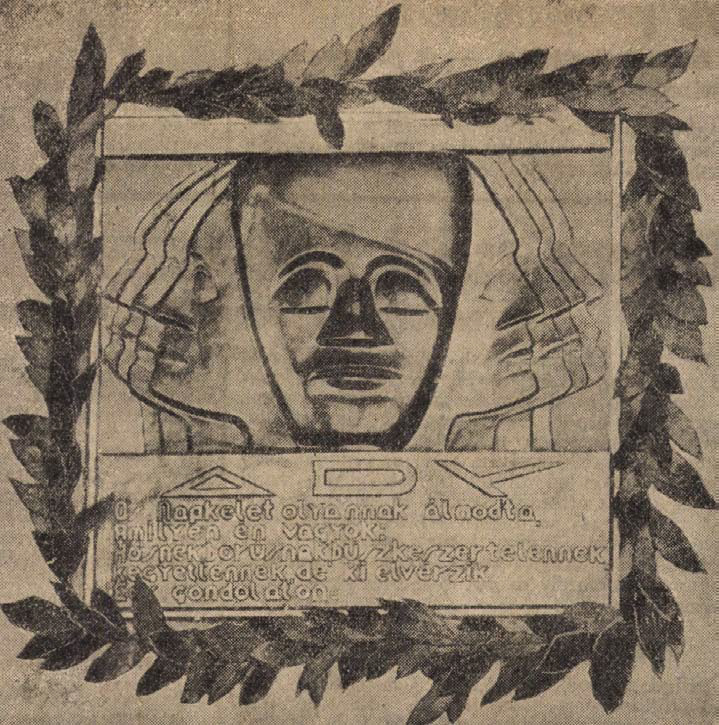
A memorial plaque with a relief of Endre Ady by Dezső Bokros Biermann was unveiled on the side of the Kabos box in 1929
(Photo: Népszava, 10 September 1929)
Similarly to every decent café in Pest, the Palermo also had billiard tables and card rooms, while its terrace opened onto the pleasant Liszt Ferenc Square. The idyllic café eventually fell victim to the economic crisis that began in 1929. The 35-year-old, ambitious owner, Kálmán Katona Klein bought the locale with hopes of turning its fortunes around but eventually succumbed to the financial pressure. He committed suicide in a cabin of the baths on Kazinczy Street on 2 January 1930.
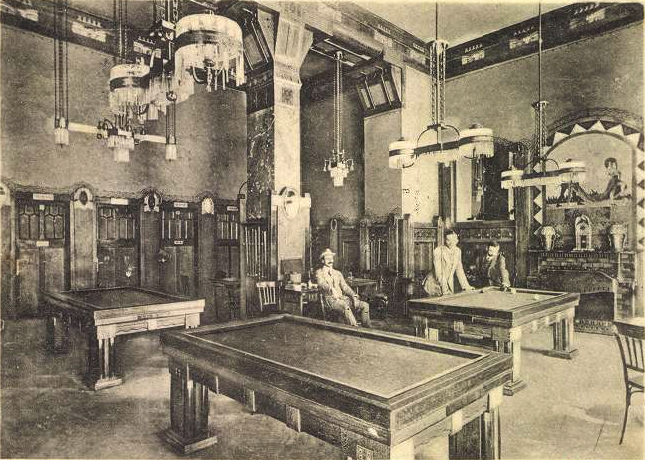
The billiard room in Café Palermo (Photo: Páló Bíró/postcard)
 Café Palermo in all its glory (Photo: Bíró Pál/postcard)
Café Palermo in all its glory (Photo: Bíró Pál/postcard)
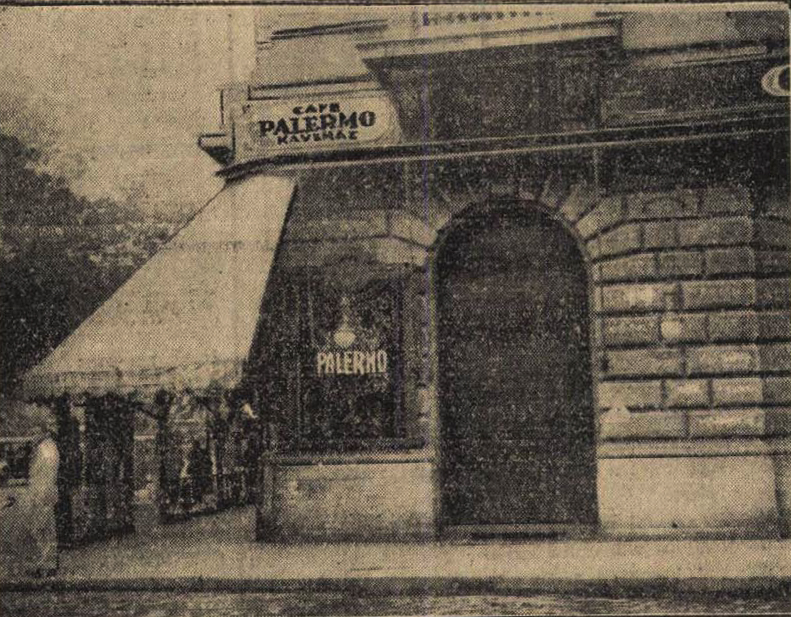
Café Palermo with shutters closed, 17 July 1930 (Photo: Pesti Napló, 18 July 1930)
The café was closed on 17 July the same year, in the middle of the day. Guests were calmly enjoying their drinks; a few afternoon waiters had arrived for their shifts when three individuals with briefcases appeared. As it turned out, they were bailiffs, and quickly shut the place down. But not for long. Although Café Palermo never reopened, several similar cafées or restaurants operated in its place over the years. First, the Eden, then the Balázs Café and later, the Brasil Espresso (coffee bar) in the sixties.
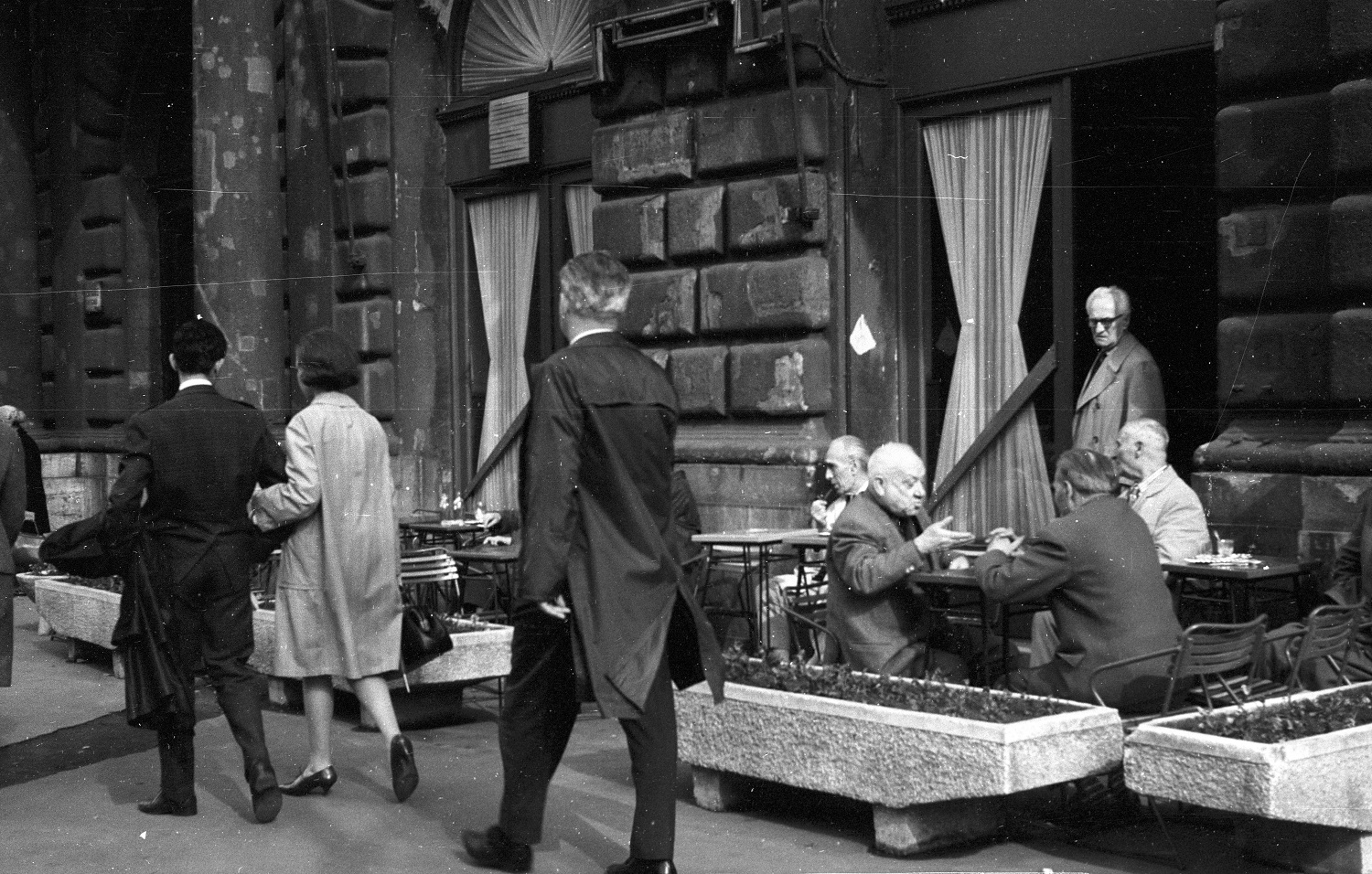
After "the good old days" Brasil Espresso in place of Palermo in 1968 (Photo: Fortepan/No.: 100870)
The Terézváros Civic Casino operated in the building alongside Café Palermo, its halls served as a venue for social events and balls, while those looking to gamble or play cards also found their fun. But gambling often goes hand in hand with fraud. In March 1925, the owners of the casino, Elemér Bársony, the former Minister of Social Welfare, among them, were convicted for illicit gambling.
The area around the building was held in fear in 1934 by a series of mysterious explosions: over a short period of time bombs were detonated in 10 and 11 Liszt Ferenc Square and 42 and 70 Andrássy Avenue. An unexploded bomb was also found in the staircase of 47 Andrássy Avenue, attached to the pedestal of the Apollo statue. Although the crude homemade device failed to ignite, contemporary experts believed it could have caused significant damage to the building. After a few weeks of investigation, the police confirmed that the same individual, József Schiess, a 33-year-old painter, was behind the bombings. The anarchist-communist built the bombs in the basement of his rented flat at 81 Izabella Street. He later admitted that he was a member of the Communist Party and had wanted to “celebrate” the 25th anniversary of the proclamation of the Hungarian Soviet Republic with the attacks.
The building was also attacked by the Arrow Cross during World War II when hundreds of Jewish people were dragged from here to be executed on the riverbank.
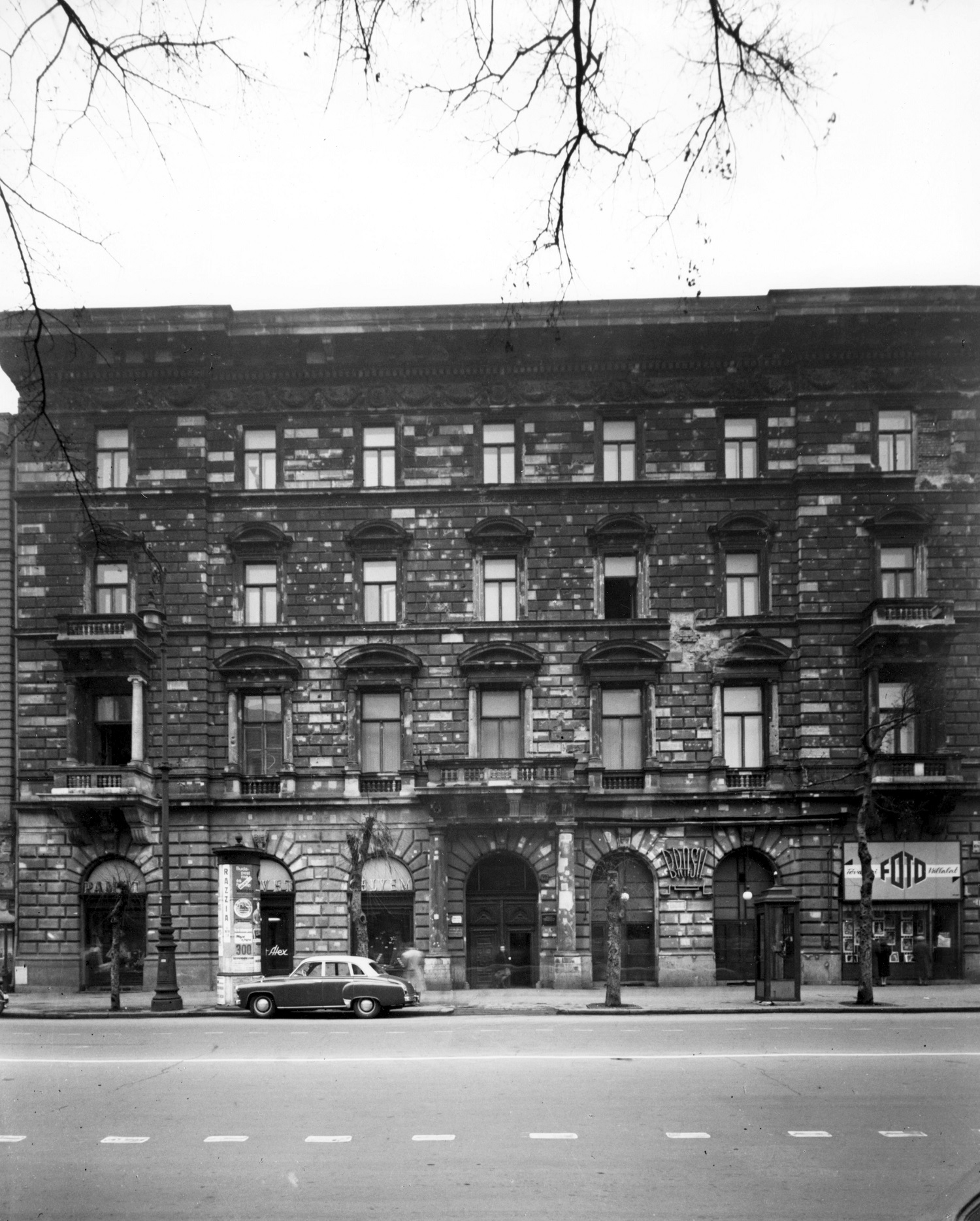
The palace had been in its well known degraded state since the 1950s (Photo: Fortepan/No.: 103059)
Although the building survived the bloodshed of the20th century, the planned renovations of recent decades have failed due to neglect and corruption. As a result, the building has come close to destruction many times, but at the same time, many original, valuable details have been protected from improper changes. If, historical elements are truly restored during the current renovation, a new chapter of the house's history will begin. One, hopefully, more fitting to its exciting history.

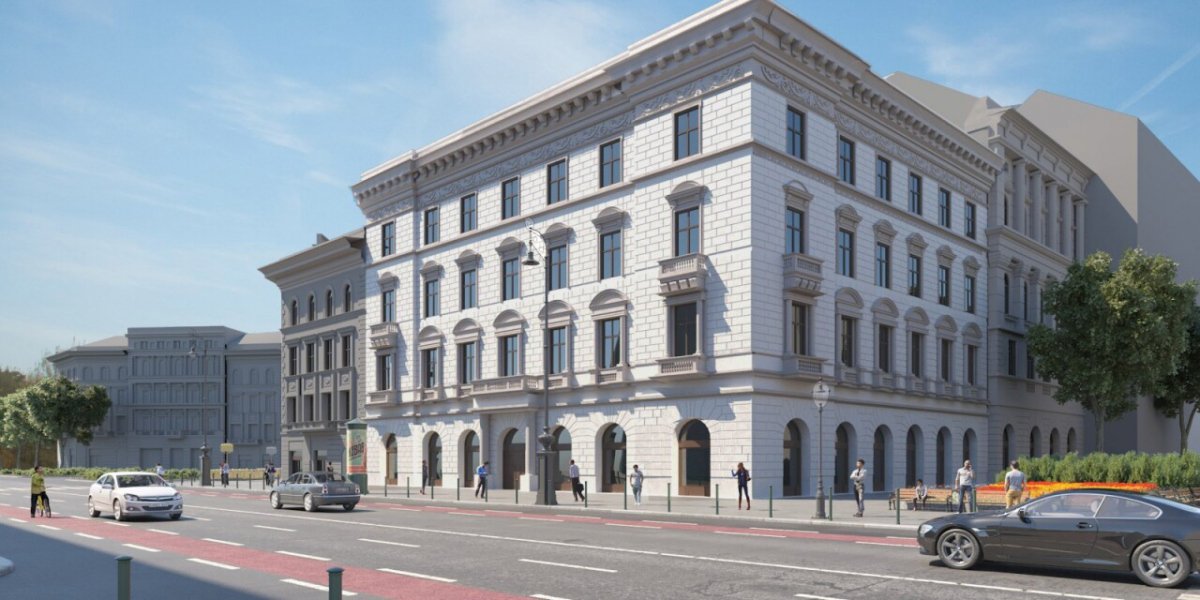



































Hozzászólások
Log in or register to comment!
Login Registration